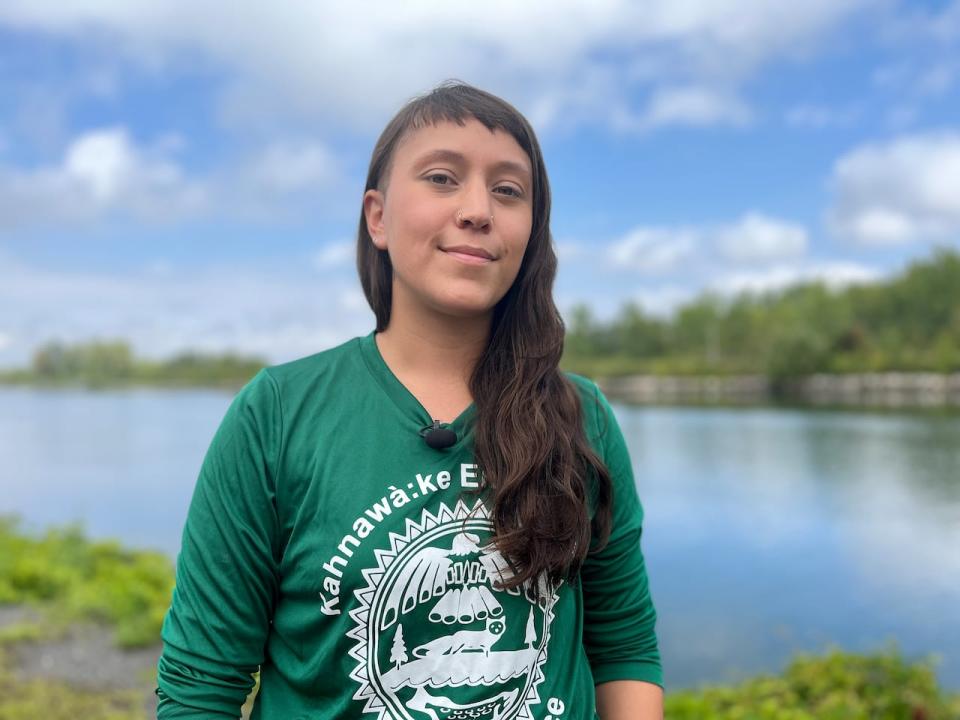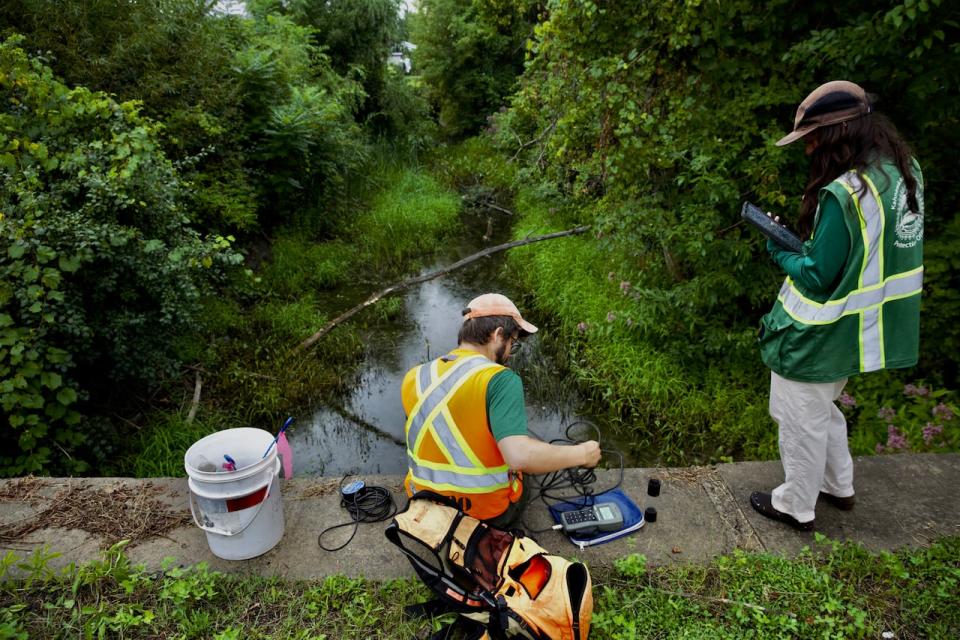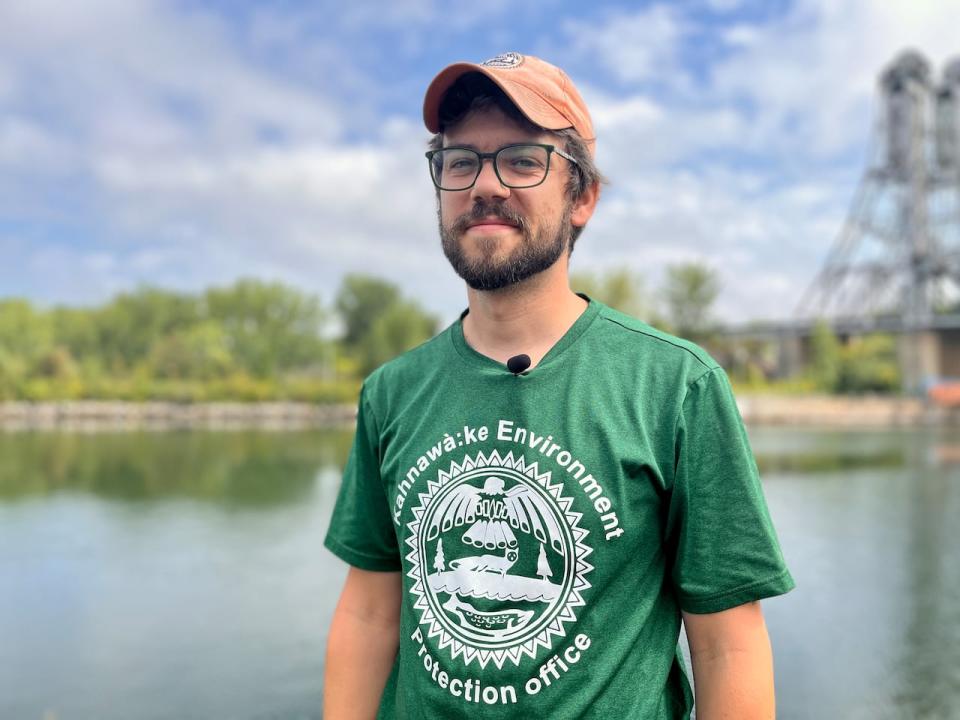Kahnawà:ke looks to restore community creek to its former glory

The North Creek isn't what it used to be.
The creek, which runs through the Kanien'kehá:ka (Mohawk) community of Kahnawà:ke south of Montreal, was once a vibrant place used for swimming, fishing, and skating but over the years it's earned an unfortunate nickname.
"The creek used to be so beautiful, which is so juxtaposed when you think of it being called the Whákera's creek now — the smelly creek," said Carlee Loft, environmental projects co-ordinator for policy and outreach at the Kahnawà:ke Environment Protection Office.
"When you look at it now, it's barely flowing. Some areas don't even look like a creek anymore. It looks like a ditch."
Loft is a part of a team at the Kahnawà:ke Environment Protection Office on the North Creek Community Visioning Project. She's collecting stories from elders and other community members about the history of the creek.

Carlee Loft is the environmental projects co-ordinator for policy and outreach at the Kahnawà:ke Environment Protection Office. (Ka’nhehsí:io Deer/CBC)
The stories will be archived and made accessible to the community, and will also be used to gather a shared vision of the creek's future and inform restoration efforts.
"Maybe it won't be exactly as it used to be but it's really exciting to think that we could reintroduce flow; we could have more fish coming through, create a better habitat for them," said Loft.

A section of the North Creek during the 1930s or 1940s. (Submitted by Kahnawà:ke Environment Protection Office)
For Brandon Rice, project support technician, it's important that the cultural ties and activities around the creek are also held onto.
"As we move forward into the future, the restoration work that we do want to do, there is a potential for that to come back if the work is done right," said Rice.
Rice and his coworkers spent the past week in the creek, sampling fish and testing the water.
They used minnow traps to catch fish. Size, weight, species and any abnormalities were documented before they were released back into the water.

Tyler Moulton and Carlee Loft of the Kahnawà:ke Environment Protection Office conduct fish sampling in a section of the North Creek on Tuesday. (Ka’nhehsí:io Deer/CBC)
"We're getting an idea of the diversity of the fish in the creek and the sensitivity of the species of fish that are here so that we can use them to evaluate the overall health of the creek," said Tyler Moulton, environment projects co-ordinator — aquatic habitats.
Out of the four creeks in Kahnawà:ke, the North Creek has the lowest surface water quality and lacked a diverse macroinvertebrate population, according to an Aquatic Stewardship Program survey conducted last year, due to human disturbance and development.

Tyler Moulton is the environment projects co-ordinator for aquatic habitats. (Ka’nhehsí:io Deer/CBC)
The creek once flowed from the St. Lawrence River but was partially destroyed when the St. Lawrence Seaway, a system of locks, canals, and channels between Montreal and the Great Lakes, was constructed in 1954.
Invasive plants like phragmites, as well as channelization and the diversion of flow due to the construction of buildings and roads have also had an impact.
But environment staff like Rice are not losing hope.
During sampling conducted this week, at least six species of fish were identified in the creek. While most found are "tougher" species, a smallmouth bass at the end of the creek was a pleasant surprise
Rice said the fish would have had a long journey to get where it was caught.

Brandon Rice and Carlee Loft conduct fish sampling in the North Creek. (Ka’nhehsí:io Deer/CBC)
"For it to hatch and move all the way up the creek to where we caught it, it's pretty interesting. It shows the potential," said Rice.
"There is still flow; the creeks aren't completely obstructed."
The data collected will be used to compare the health of the creek before and after any intervention efforts implemented next summer.


